Official unveiling for UWE Bristol's new School of Engineering building

- Equipped with latest digital engineering technology
- Student community expanded to meet skills gap in region
- Breaking down barriers for students with neurodiversity
- Pledge to double number of female engineering students
The University of the West of England’s new state-of-the-art School of Engineering building has been officially opened.
Designed to support the development of the next generation of engineers, the flagship building will help the university reach its ambition to become one of the leading engineering schools in the country.
Set over four floors and 8,500m2, the building features teaching studios, modelling and simulation suites, laboratories, specialist workshops and student learning zones accommodating a wide range of engineering disciplines such as composite manufacturing, machining and metrology. It is equipped with the latest digital technology, including engine test cells, driving and flight simulators, a virtual and augmented reality cave, and ‘smart factory’ testing facilities.
Completed in 2020, the striking multi-million pound facility on Frenchay campus has transformed engineering teaching and learning at UWE Bristol and has already been named Project of the Year at the British Construction Industry Awards where judges praised its intelligent and sustainable design.
Relocation to the spacious new site has enabled the university to expand the student community to 1,600, addressing the rise in demand for skilled engineers in the region particularly in the booming aerospace sector.
To formally declare the landmark building open, a special event was attended by students, staff, alumni and industry partners, along with guest speaker Dawn Bonfield MBE, former president of the Women's Engineering Society, and celebrated sculptor Alice Channer who was commissioned to create an engineering-inspired public artwork in the atrium.
Tod Burton, Executive Dean for the Faculty of Environment and Technology at UWE Bristol, said: “With our fantastic new contemporary building, fit for the 21st century and the digital era, we now have one of the top engineering facilities in the South West and one that will attract and inspire the engineers of the future.
“It has already been completely transformative for our students and staff, offering different and more flexible ways of teaching, learning and working. We are immensely proud of the new facility and feedback from our students has been resoundingly positive.”
Planning and design work on the new building was carried out in tandem with a renewal of the university’s engineering curriculum, drawn up in collaboration with industry to ensure engineering graduates are equipped with the skills and knowledge needed to succeed.
Professor Lisa Brodie, Head of the Department of Engineering Design and Mathematics at UWE Bristol, said: “Moving to our wonderful new building with its complementary practise-based curriculum has signalled a real cultural shift. Our students are now known as professional student engineers, rather than engineering students. They are studying during traditional working hours, learning in spaces that closely resemble actual engineering workplaces, and use the same specialist equipment as professional engineers. We are placing an enhanced focus on problem solving, trialling and testing, because it is beneficial for students to try and fail as it builds resilience, creativity and innovation.
“With the principles we are instilling in our students, we are ensuring they are world ready from Day One on graduation and possess transferable skills for the jobs of the future; jobs that perhaps don’t even exist yet. Already, employers are telling us they would like to recruit their graduates from UWE Bristol as they know they will be employable when they have completed their studies.”
In addition to a new building and curriculum, UWE Bristol is redoubling efforts to increase diversity within its engineering intake. This includes enrolling more students with neurodiversity, and providing them with enhanced levels of personal mentoring and support from enrolment to employment, and doubling the number of female engineering students.
The university aims to help attract a broader range of engineers by sparking interest among younger age groups, with schoolchildren as young as five to be invited to visit the building’s Prototype and Play Lab to participate in inspiring engineering outreach activities.
Professor Brodie said: “This is really important because if we want to solve the challenges we face as a society, we need to attract different types of people into the engineering discipline. We need to embrace different ways of thinking and doing, and celebrate differences. Our mission is to change the perception of the roles that engineers fulfil and raise aspirations in underrepresented groups.
“If we carry on seeing the same intake entering the profession, we will continue to come up with the same old solutions. With this in mind, we are aiming to produce more ‘non-standard’ engineers in the coming years. Engineers will need to think differently and be far more creative and innovative over the next decade, particularly with some of the challenges we face in areas such as the climate crisis. We aim to be the difference.
“Already we have received fantastic feedback about the new building from female engineers, who have praised its light and spacious design. We want to be able to able to reach people from all backgrounds to open up engineering as a possible career.”
The School of Engineering at UWE Bristol
The completion of the School of Engineering building continues UWE Bristol’s extensive multi-million pound capital programme of investment in its campuses and facilities, and completes the redevelopment work around the Heart Zone at Frenchay campus.
In April, the building achieved an "Excellent" rating for its sustainability credentials from the international scheme BREEAM (Building Research Establishment Environmental Assessment Method). Examples of the sustainability best practice employed in the building include natural ventilation, solar panels and connection to UWE Bristol's district heating network.
UWE Bristol is an anchor partner in the West of England Institute of Technology, which delivers higher-level technical education for the digital, engineering and health sectors.
The University is also playing a central role in a new £10 million digital engineering centre for the region. Announced in 2020, The Centre for Digital Engineering Technology & Innovation (DETI) is a research, innovation and skills initiative created to develop and accelerate digital engineering across multiple industry sectors.
Acclaimed British artist Alice Channer unveiled her first permanent public sculpture Nanowires, commissioned by UWE Bristol and located in the School of Engineering, at the opening event. One of only a handful women to win a public art commission in the UK, Channer worked closely with UWE Bristol’s bioengineering team, using electricity-generating bacteria as her starting point. Channer’s large-scale aluminium sculpture, which hangs from the atrium ceiling, responds to the ground-breaking technology developed by Professor Ioannis Ieropoulos.
Related news

07 July 2025
UWE Bristol named training provider of the year for closing engineering skills gap
UWE Bristol has been named Training Provider of the Year at the Enginuity Skills Awards for its commitment to driving inclusive growth in the engineering industry.
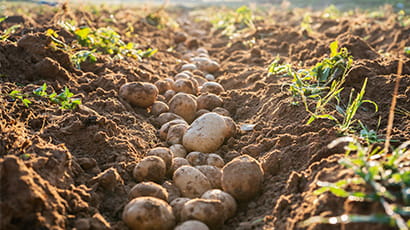
26 June 2025
Development of innovative Devon food processing centre to tackle food waste gets UWE Bristol support
UWE Bristol is supporting the development of an innovative food processing centre in Devon that will transform food waste management and support greater food sustainability.

21 May 2025
Students reveal creative responses to real-world experiences at UWE Bristol Showcase
UWE Bristol’s Showcase, celebrating student creativity and innovation across the College of Arts, Technology and Environment, returns this June.
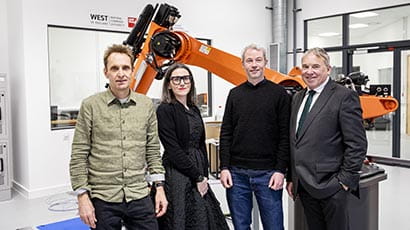
03 April 2025
Interdisciplinary studio bridging the gap between creative industries and technology opens at UWE Bristol
A new £3.6m laboratory has opened at UWE Bristol which will provide a unique arts, humanities and technologies multi-disciplinary space for researchers, entrepreneurs and businesses across the West of England.
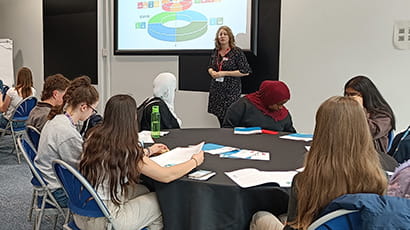
12 November 2024
UWE Bristol to help inspire next generation of young people into green careers
UWE Bristol will play a key role in a new programme to educate more than 10,000 young people in the West of England about green skills and help them explore eco-friendly careers.

22 October 2024
‘Life changing’ prosthetic leg developed at UWE Bristol to be trialled at global competition
Researchers from UWE Bristol are preparing to showcase an advanced bio-inspired prosthetic leg they have developed to improve the quality of life for people with above-knee amputations.

17 September 2024
Repair Café returns to UWE Bristol’s School of Engineering
UWE Bristol’s Repair Café returns this autumn with a special ‘repairs skills day’ on 25 September, ahead of the café reopening monthly from 9 October.
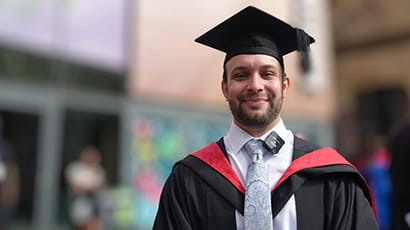
29 July 2024
Student who dedicated his time at university to helping disabled people graduates
A student who has dedicated his time at UWE Bristol to helping people with disabilities has graduated.

18 July 2024
Pioneer who improved lives of people with diabetes awarded honorary degree
An inventor who vastly improved the lives of people with Type 1 diabetes with a series of innovations has been awarded an honorary degree by UWE Bristol.
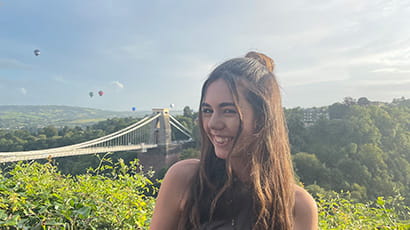
04 June 2024
Urban places and spaces should be accessible for all, says UWE Bristol student
Student Emily Annakin is hoping to land her dream job, using her own experience of visual impairment to design inclusive urban spaces.
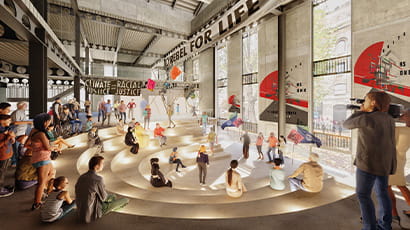
07 May 2024
Graduating students gear up to present their work at annual Showcase
UWE Bristol's Showcase offers visitors the chance to discover a new generation of talent from the College of Arts, Technology and Environment.

18 January 2024
Funding awarded to UWE Bristol to boost female participation in engineering and construction industries
UWE Bristol will increase numbers of women on engineering and construction degree apprenticeship courses to address industry underrepresentation, supported by funding from the Office for Students (OfS).






